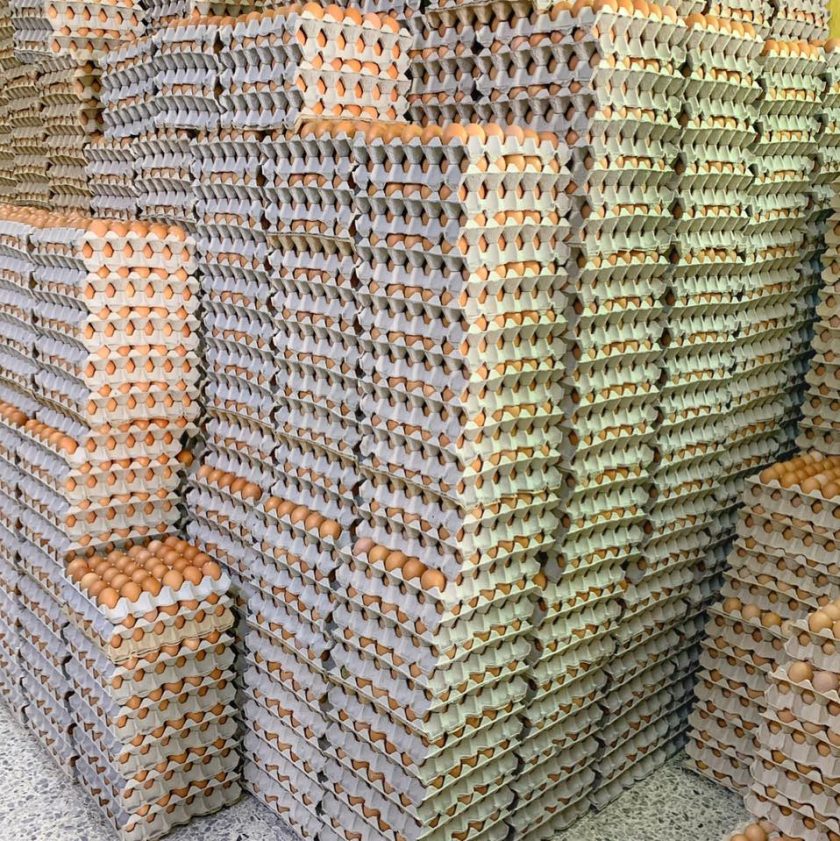The partial removal of Malaysia’s egg subsidy effective this month — ahead of a full phase-out in August — has sparked optimism among investors and buoyed poultry-related stocks, according to market analysts.
Climbing shares for industry notables
Industry observers noted that the decision to reduce subsidies reflects a stabilized domestic egg supply and a current market surplus, creating room for policy change while easing the government’s financial burden.
Shares of key poultry players such as PWF Corp, Lay Hong, and Leong Hup International climbed after the government halved the egg subsidy on May 1.
PWF Corp gained to USD 0.174 per share from USD 0.169, with 445,500 shares traded, giving the company a market capitalization of approximately USD 55.45 million. Lay Hong edged up to USD 0.073, with 3.8 million shares exchanged and a market value of USD 55.64 million.
Leong Hup, the most actively traded among poultry counters, rose to USD 0.136, with 12.3 million shares traded, lifting its market cap to USD 497.87 million.
QL Resources, the largest poultry stock by value, remained flat at USD 1.02 despite 3.4 million shares changing hands, keeping its valuation at USD 3.73 billion.
Egg prices falling
Dr Mohd Afzanizam Abdul Rashid, Chief Economist at Bank Muamalat Malaysia, said that average egg prices have been trending downward, paving the way for subsidy reform.
As of February 2025, the average prices for 10 eggs stood at USD 0.94 for Grade A, USD 0.89 for Grade B, and USD 0.85 for Grade C — annual declines of 11.2%, 13.0%, and 11.8%, respectively.
“With prices softening, the government has the fiscal space to roll back subsidies,” he said.
Despite lower selling prices, producers have continued to post strong results. Leong Hup reported a net profit of USD 91.27 million for FY2024, up from USD 64.21 million a year earlier.
Agriculture and Food Security Minister Mohamad Sabu said that rationalizing subsidies could yield government savings of USD 21.28 million per month, or over USD 255 million annually.
Industry shake-up and opportunity
According to Dr Azmi Hassan, Senior Fellow at the Nusantara Academy for Strategic Research, the change will push the industry to innovate and diversify its offerings beyond basic egg varieties.
“While consumers will face modest price hikes, we cannot depend on subsidies indefinitely. The egg subsidy has been costing the government close to USD 213 million a year,” Dr Azmi said.
He noted that with price ceilings removed, producers can improve margins and develop new products, turning a profit without government aid.
“The end of the subsidy — or more precisely, the end of artificial price gaps — will allow a more competitive, innovative, and efficient industry to emerge,” he added.
Still, Dr Azmi cautioned that future food subsidy removals should be carefully planned to avoid inflationary shocks.
Pressure on producers
Neoh Jia Man, fund manager at Tradeview Capital, warned that the move could compress profit margins for larger producers previously dependent on subsidies.
“They may try to raise prices, but the oversupply will likely limit their ability to do so,” he said.
Egg-focused producers like Teo Seng Capital, TPC Plus, and LTKM are expected to be among the hardest hit.
“Don’t expect positive spillovers. Instead, the industry may see reduced production and logistics activity as output rationalization kicks in,” Mr Neoh said.
Government data shows that nearly USD 532 million was spent on egg subsidies between February 2022 and December 2024.
The former subsidy was USD 0.021 per egg, with ceiling prices at USD 0.089, USD 0.085, and USD 0.081 for Grades A, B, and C, respectively — translating to retail prices of USD 2.68, USD 2.55, and USD 2.43 per tray of 30 eggs.
Modest price impact expected
Analysts at TA Securities believe the price impact from the full removal in August 2025 will be modest. Based on past data, retail egg prices fluctuated between USD 0.089 to USD 0.098 each when no subsidies were in place in 2022.
The firm estimates that the upcoming policy shift will increase prices by just USD 0.004 to USD 0.009 per egg — primarily from cost pass-throughs rather than fundamental market imbalances.
Malaysia consumes about 11.6 billion eggs annually, or roughly 968 million per month, while egg production surged to 16.7 billion units in 2023, up 15.8% year-on-year.
The country’s egg self-sufficiency ratio has consistently exceeded 100%, and supply is expected to remain strong even after the subsidy ends.
Eggs will likely continue to be the most affordable protein source for Malaysian households, TA Securities concluded.

